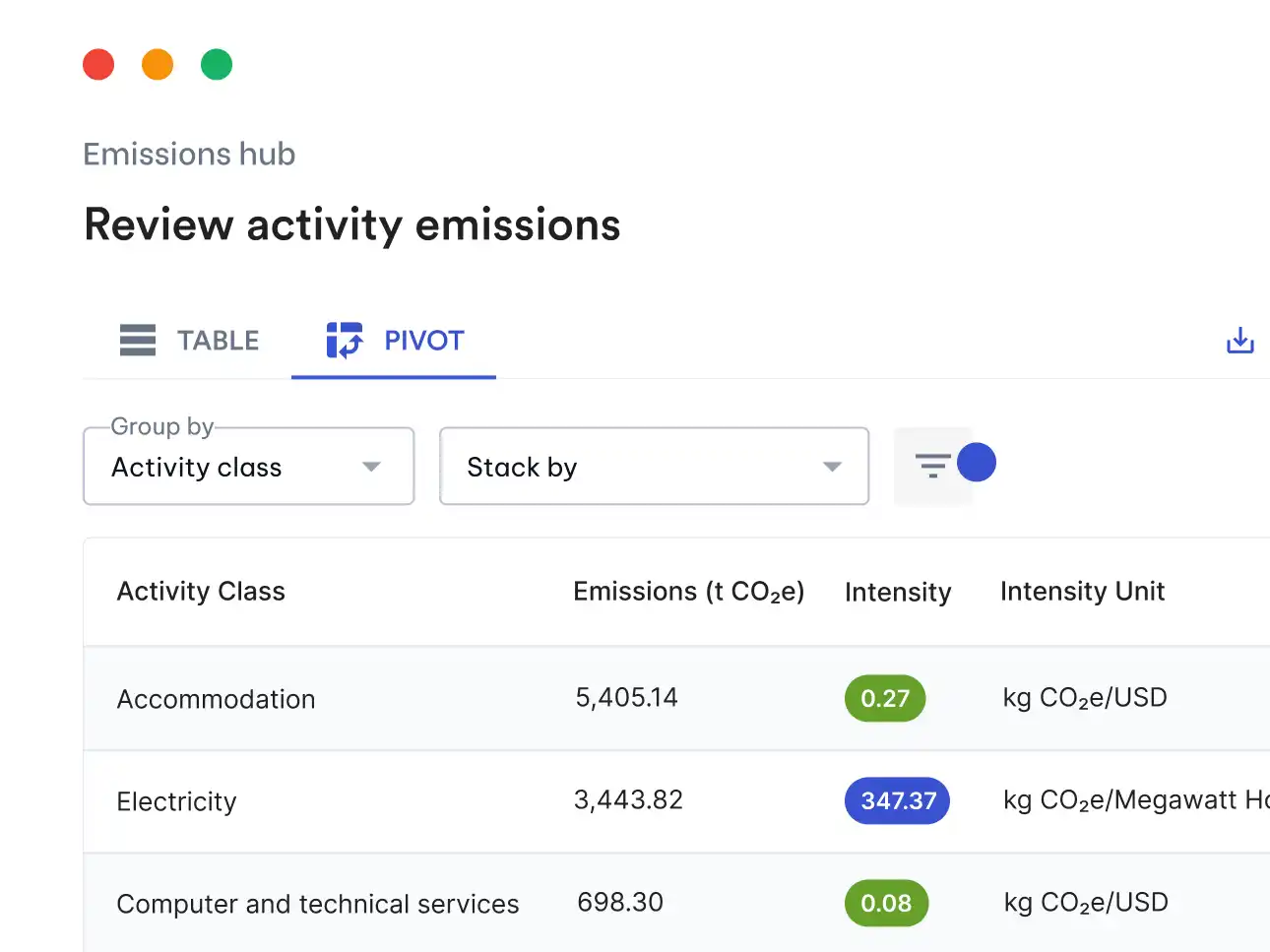With the global rush to move towards net zero carbon emissions, companies worldwide have begun to analyse how they can measure and reduce the carbon emissions created by their own operations. These are the easiest to measure, and the easiest to control. However, one of the hardest problems to tackle beyond this is supply chain emissions calculations – and it is also the most important.
Supply chain emissions are the emissions associated with the carbon footprints of your suppliers, and the amount of influence you hold over those footprints – they sit within Scope 3, as defined by the Greenhouse Gas Protocol (GHG Protocol).
These emissions make up over 80% of all carbon emissions worldwide, and the bulk of them are created by the millions of small to medium enterprises sitting within the value chains of large enterprises. This is why these emissions are the most difficult type to tackle for a large organisation, particularly one with a complex value chain – the data is either hard to access, or simply doesn’t exist.
How are supply chain emissions measured?
To measure supply chain emissions accurately, there are a few data points you need. Firstly, you need to know the total footprint of each of your vendors, including their own Scope 3, and how it is split up between the different products and services they offer. And secondly, you need to know what proportion of their total output you purchased, for the product or service you bought. The emissions assigned to your organisation’s inventory are then calculated by taking the same proportion of the vendor’s footprint as the proportion of their total output you purchased.
Let’s take the example of paper. Say you purchase 100,000 pieces of paper from a vendor that produces a total of 10 million pieces a year. And on top of this, the vendor has calculated that the total emissions associated with their production of paper is 20,000 tonnes of CO2e per year. Then, the total supply chain emissions assigned to your organisation will be 1% of the vendor’s total footprint, or 200 tonnes of CO2e for that year – because 100,000 is 1% of 10 million.
Because of this method of measurement, you will find that if you calculated the emissions of all your vendors in this way, most of them would lie within a small portion of your total supply chain, where your spend is the highest and on the most emissions intensive products.
Current challenges in planning your supply chain emissions
In order to understand where your supply chain emissions are tracking in the future, it’s necessary to know information regarding the initiatives your vendors are taking to reduce their impact. At the highest level, this can include any SBTis they’ve set, and go down to a more granular level to include the initiatives they are taking around energy usage, fuel efficient or electric vehicle rollout, and engagement with their own suppliers.
Getting a comprehensive view of all of this, however, is a very arduous exercise, that could involve months of work collecting data from vendors. Usually, the data you collect will not be in a standardised format, so then you must spend time pulling insights out of the data yourself. And a lot of the time, even if you have large suppliers with publicly available data on their initiatives and SBTis, researching and collecting this data for your whole value chain, and then putting it in context with your own emissions, will also take a long time.
How technology can help
As mentioned, many organisations already publicly disclose their emissions, SBTis, as well as initiatives they are taking to reduce their emissions into the future, via their annual sustainability reports, press releases, articles, or third parties such as CDP and GRI.
Because much of this data is publicly available, Artificial Intelligence (AI) can be utilised to source it live from the web, standardise its format, and pull it all into one place.
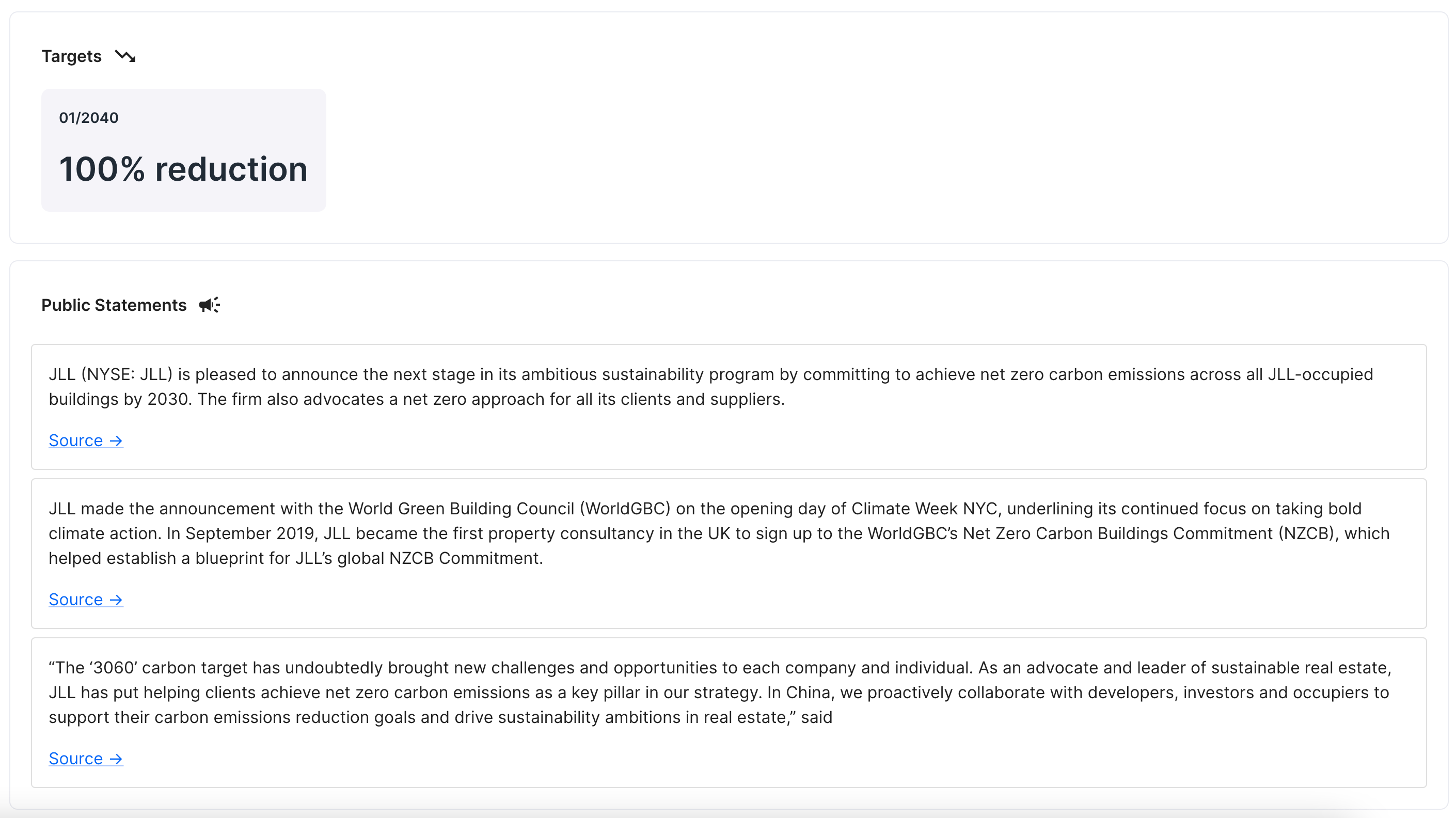
Once you have all of your vendor SBTis in one place, you can begin to actually forecast what your emissions will look like in the future, based on those SBTis. Remember, supply chain emissions are reduced as your vendors reduce their total emissions, so as they work towards their goals, there is a material impact on your own emissions that is worth quantifying.
For example, let’s say JLL is the largest contributor to your emissions today. Because they have a net zero target in 2040, this means that they will no longer be your largest emitter in the future, and your efforts would be better spent engaging with other vendors high on your supply chain emission graph that don’t have any plans publicly disclosed.
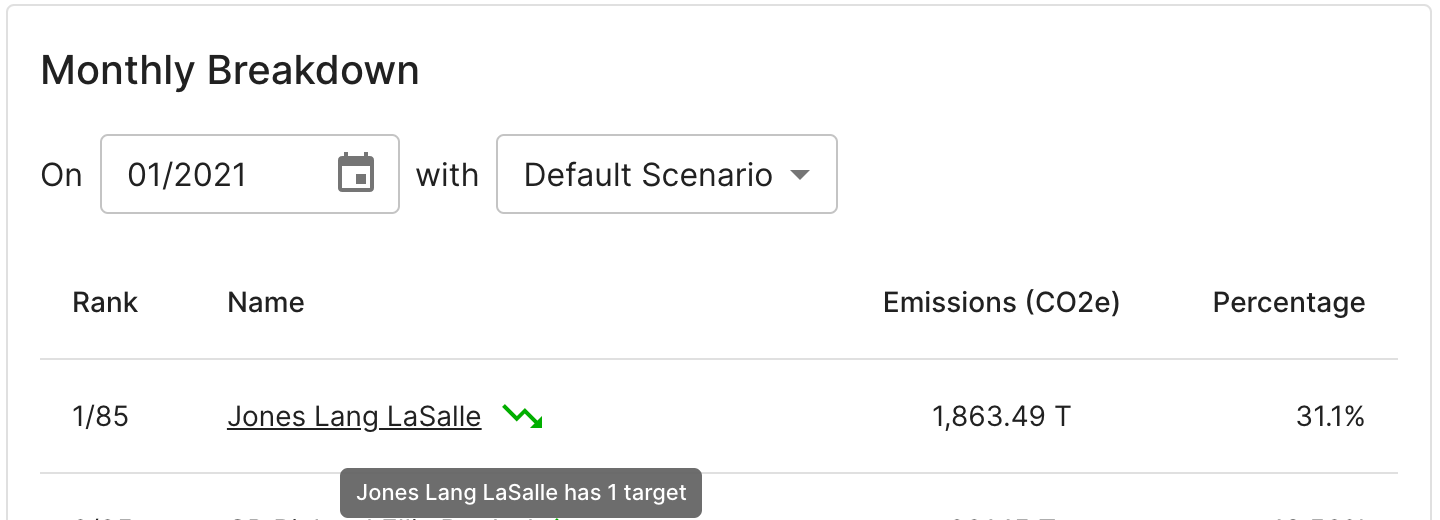
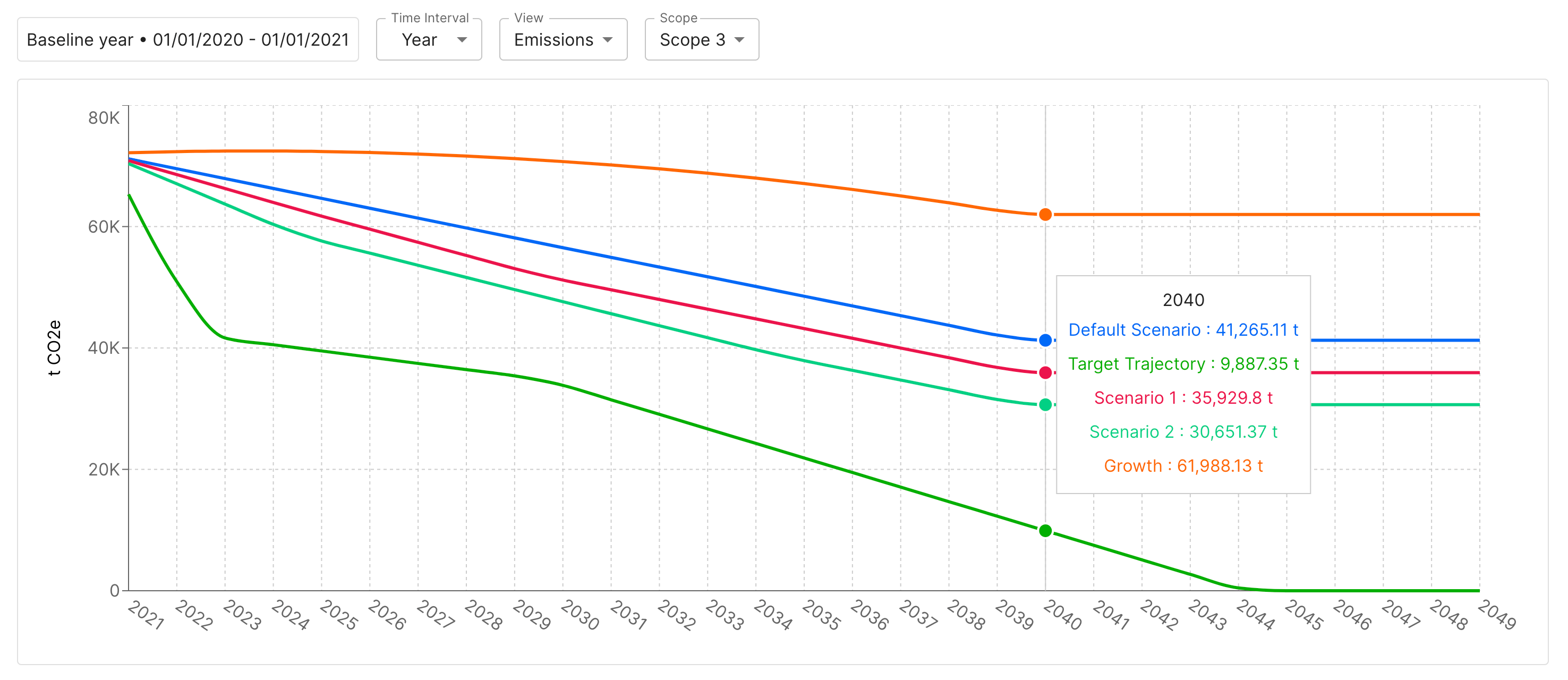
Using this kind of technology to analyse and explore different reduction pathways in the context of automatically sourced publicly available data, can significantly reduce the administrative burden faced by sustainability professionals and consultants when coming up with emission reduction strategies for their organisations and clients. It allows for deeper and quicker insight into the total emissions in your supply chain, and enables more comprehensive analytics and reporting.
How Avarni can help you forecast your supply chain Scope 3 carbon emissions
Avarni uses proprietary AI extensively to pull publicly available data on emissions, SBTis, and reduction initiatives live from the web for thousands of companies, and puts all the data in a standard format. This not only saves our clients hundreds of hours of research and data cleaning when analysing their vendors' climate credentials, but also allows them to have a live updating feed of different announcements made by companies about their reduction initiatives over time.
For those vendors that have no publicly available data, Avarni includes a set of tools for procurement departments to source emissions data directly from vendors, by asking for primary data such as fuel and electricity usage, and types of goods or services purchased, rather than putting the administrative burden of calculating emissions onto vendors. This methodology has a high success rate compared to current most common practices, with one Avarni client getting a response rate of over 70% from suppliers within 3 weeks.
Avarni can then predict what a client's emissions will be in future scenarios based on the data aggregated, as well as variable parameters that can be changed by the user (hypothetical vendor goals, electricity grid decarbonisation scenarios, carbon prices, and business growth metrics). Forecasting/modelling capabilities that incorporate both existing vendor data, and also hypothetical vendor goals, allow your executive team to visualise the dollar amount VaR (Value at Risk) based on a carbon price that you set, and put the right reduction plans in place in a way that makes financial sense for the business.
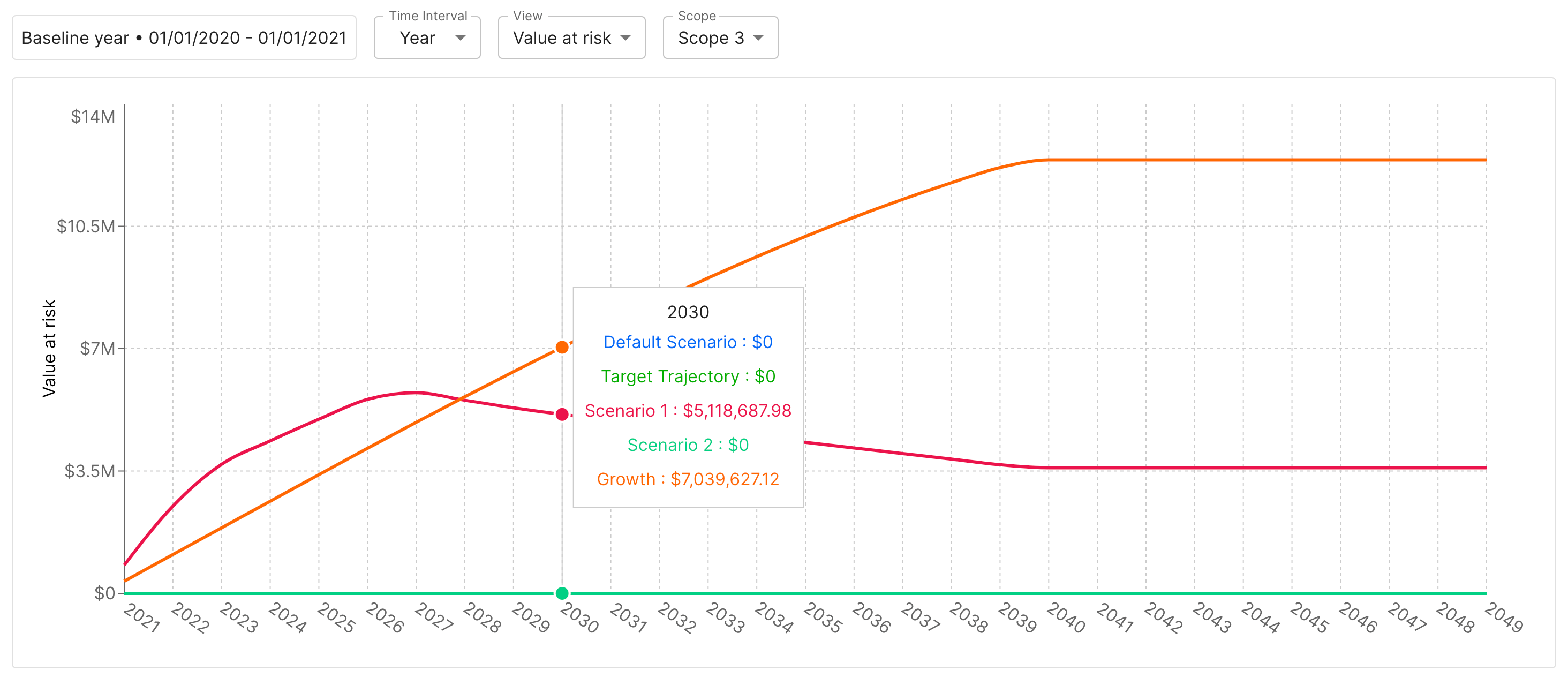
Book an appointment to learn more about how Avarni can help your organisation with data collection and forecasting your future supply chain Scope 3 emissions.





